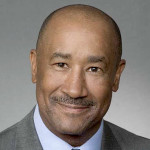The term “fiscal cliff” has certainly been kicked around in the news enough for the last year or so. For most, the term implies a financial doomsday, but there’s a pretty fair amount of misinformation and confusion about what it actually means.
The “fiscal cliff” refers to a series of tax increases and mandatory spending cuts that kicked in on January 1, 2013, when some 90% of Americans saw their taxes go up. At the same time, spending cuts that would affect defense, Social Security, Medicare and many other government benefits were proposed. The term “fiscal cliff” is shorthand for the shock waves that were expected to ripple through the U.S. economy.
To understand how we got to this juncture, in August 2011, Congress raised the country’s debt limit by $2.1 trillion. As part and parcel of that 2011 deal, Congress was to find a more long-term plan; if they failed, the tax increases and spending cuts would automatically start in January of 2013. This harsh medicine was designed to force the government’s hand into more responsible spending and revenue policy. While the U.S. debt-to-GDP ratio is still lower than most European countries, a more indebted country is still at a disadvantage when it comes to borrowing and responding to the unexpected. In addition, excessive debt can spook investors, giving rise to another financial crisis.
A spike in unemployment is still expected, as well as a drop in the deficit and debt-to-GDP ratio. In addition, the expiration of the current tax cuts may stifle investment and rattle small businesses, contributing to more unemployment and a collapse in consumer confidence.
The only remedy to this situation, according to many experts, is a program of cuts in entitlement and defense spending along with a spike in tax rates. Health care and social security could be hard-hit, with a likely increase in retirement and eligibility age for both programs. The meat of this problem is what bedevils Washington, as there’s little political will to make these tough calls. The members of Congress want to get re-elected; to do that, they need to stay loyal to their contributors (many of whom are defense contractors) and constituents…and therein lies the problem. That’s why many Americans spent New Years’ Even wondering whether or not Republicans and Democrats would lock arms to avoid marching off the fiscal cliff, or if they would fight with each other the entire way, taking the rest of the country with them.






